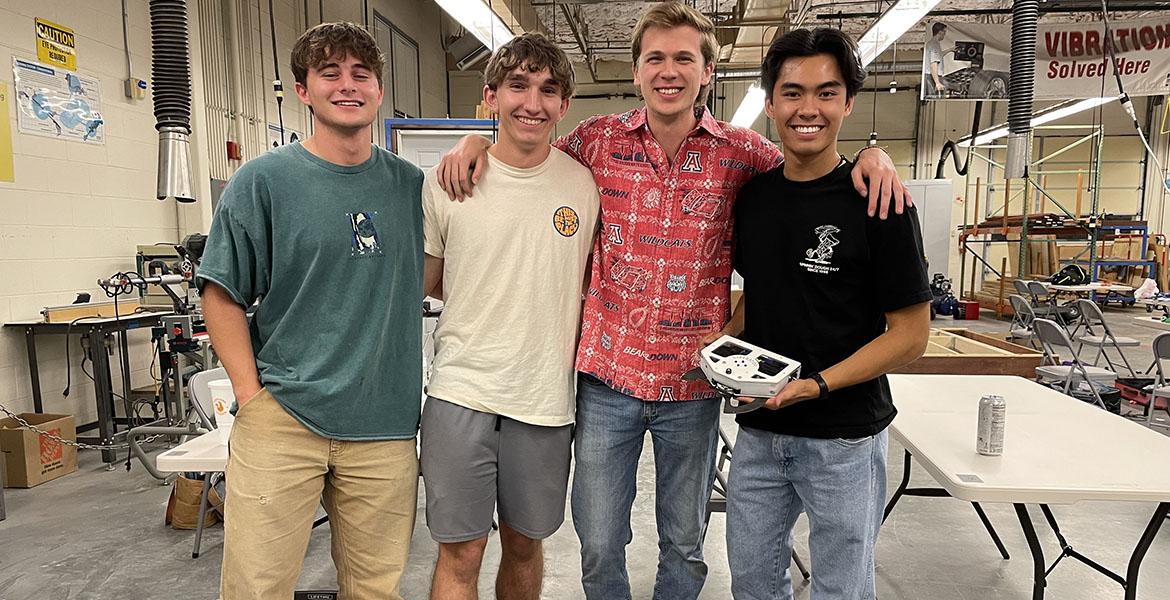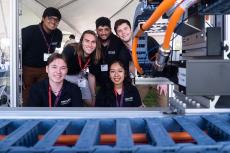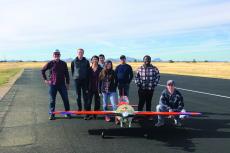Wildcat Robotics’ Inaugural Sonoran Showdown Strikes for Success
The University of Arizona’s Wildcat Robotics club hosted its first robot combat tournament, the Sonoran Showdown, in March. Thirty-eight teams brought their robots to the event at Pima Community College’s downtown campus to battle wheel-to-wheel for cybernetic glory.
The club was created last year by a team of students completing an Interdisciplinary Capstone project. Team 23037 showed off its BattleBot, “Disarray,” at Craig M. Berge Design Day in 2023. A few days after Design Day, the team drove the 250-pound heavyweight Disarray to flawless victory at the Battlebots: Destruct-a-Thon competition in Las Vegas, establishing itself as a force to be reckoned with in the biggest arena in combat robotics.
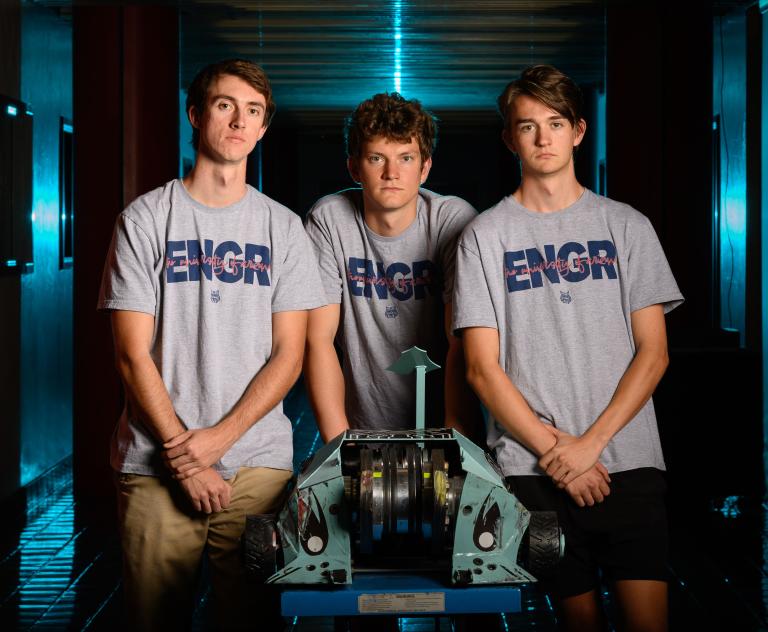
Al Hurworth, a mechanical engineering graduate student and the president of Wildcat Robotics, said the Sonoran Showdown event is a primary focus area for the club. Throughout the school year, members work together in teams to design and build 3-pound or 1-pound combat robots to compete in the showdown’s two weight divisions.
“At the end of the day, it’s their design,” Hurworth said. “They get to build it, they get to drive it at the competitions, they get to test it, they get to fix it at the competition.”
A Strong Start, More to Come
Eight of the club’s BattleBots competed in this year’s event, including “Liberator” and “UFO;” the robots placed fifth and seventh in the 3-pound tournament, respectively. Wolfgang Roettiger, the vice-president of Wildcat Robotics and a sophomore studying electrical and computer engineering, led the team behind Liberator – a 3-pound BattleBot featuring a horizontal-spinning undercutter that devastates its foes by attacking their weak, low-lying points.
“You’re in a tight-knit team, and you actually get to compete with your engineering, which is really fun,” Roettiger said.
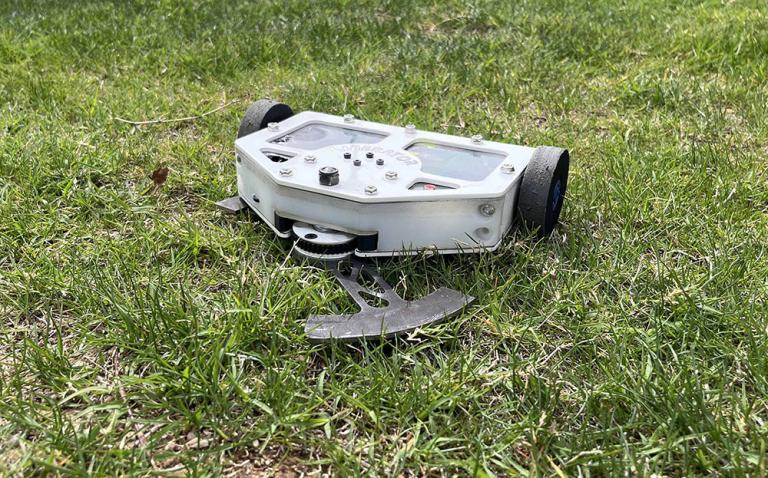
Robotics teams from around the Southwest came to compete in the Sonoran Showdown alongside the Wildcats. Around 10 robotics teams from Arizona State University participated, as well as other in-state builders and even some teams from Las Vegas. After organizers posted about the event on a website for combat robotics events and a few social outlets, registration reached capacity within three days.
“We had to cap the registration because it was a double-elimination tournament, so it was 40 teams, times two–– we had to go through 100 or so fights,” Hurworth said. “It was a big event.”
In preparation for the tournament, the club designed and built a 36 square-foot arena with 3-foot-high walls, composed of wood and plexiglass, which they call “The Box.” This allows BattleBots to fight safely in case of airborne debris or fires.
“I think [the arena] weighs 400 to 500 pounds, and we didn’t have any breaches or anything, so it worked out really well,” Hurworth said. “But logistically, that was a big thing to get it to the venue, set it up in time and make sure it was safe for the matches.”
Club leaders also optimized the tournament for spectators, with live viewing available at the event as well as a free online livestream. BattleBots fans from around the region came to watch the tournament, including some kids from middle school robotics clubs.
Participants and spectators alike shared a lot of positive feedback with the Wildcats, encouraging them to innovate on the idea for future events. Roettiger is even working on implementing a tracking system in “The Box” that will show the speed of the robots, the energy exchanged during impacts and a few other data points that spectators can track during fights.
Wildcat Robotics will bring the Sonoran Showdown back again next year, starting an annual tradition that aims to get more people interested in robotics design and BattleBot competition. Hurworth, who graduates this spring, will pass on the presidency of the club to Roettiger.
“It was a really cool thing that we were able to achieve in just the second year of the club,” Hurworth said.


